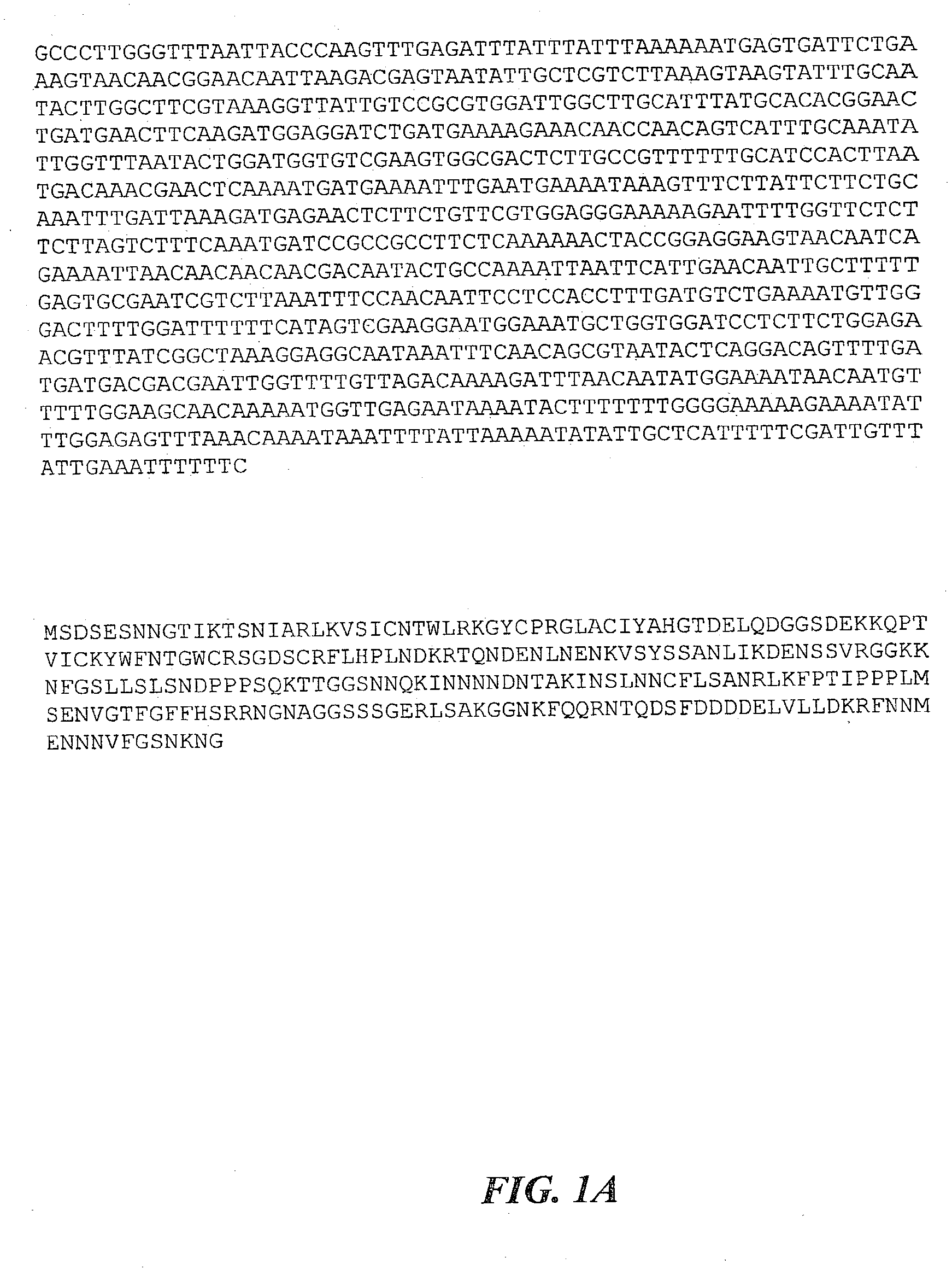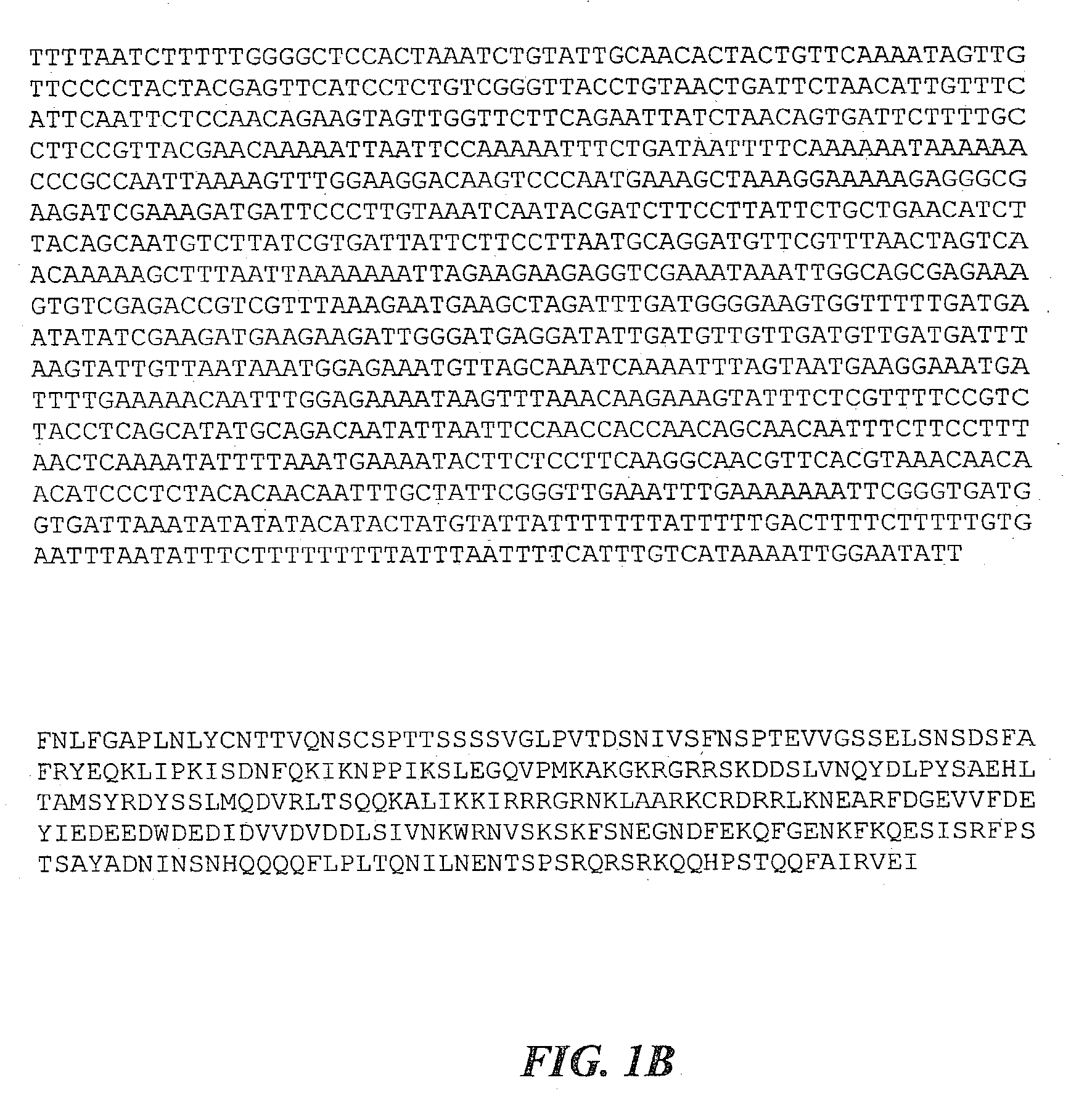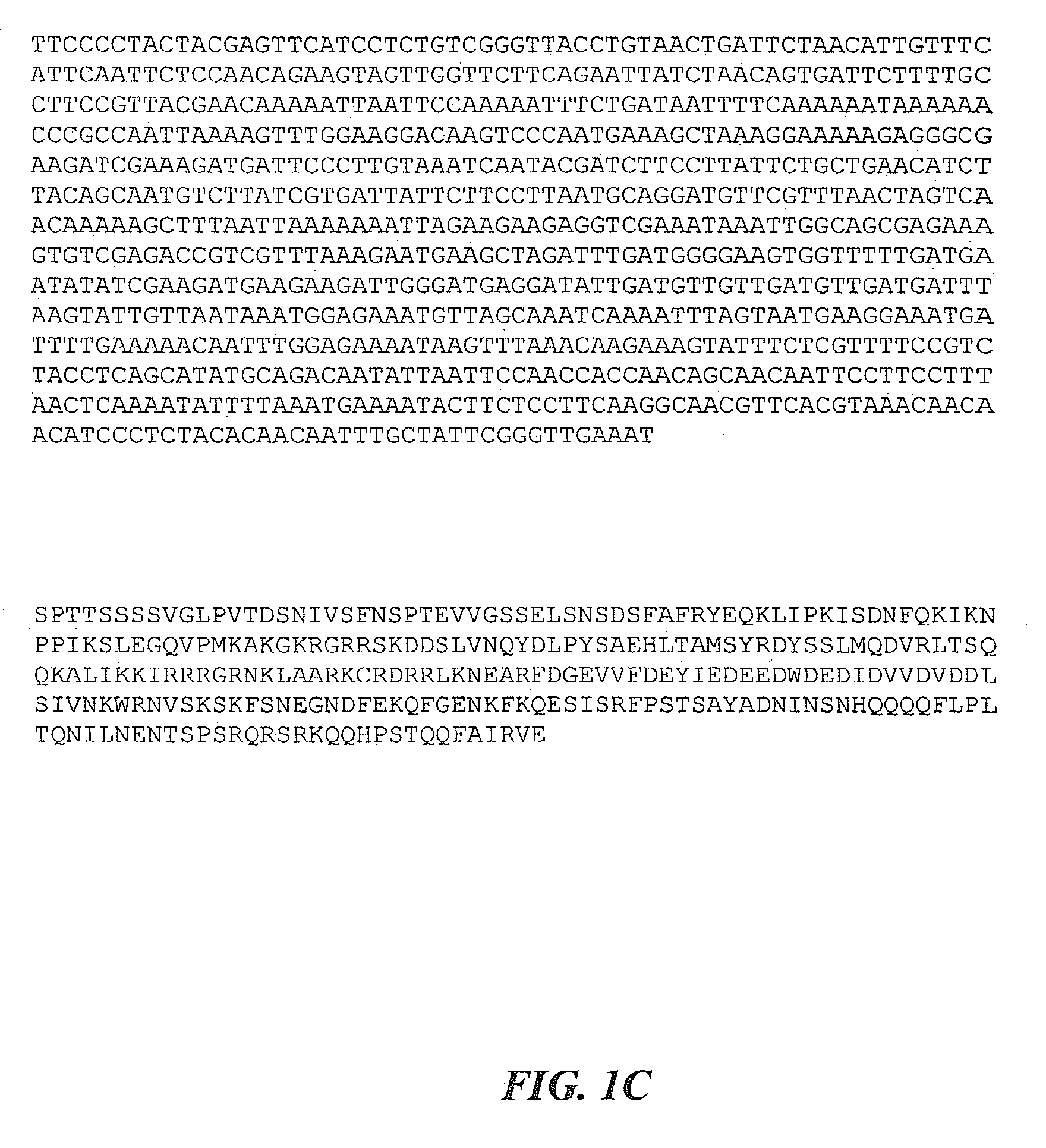Method for facilitating pathogen resistance
a technology of pathogen resistance and recombinant nucleic acid, which is applied in the field of gene control of pathogen infestation in host organisms, can solve the problems of difficult control, many of the pesticides used are non-biodegradable and accumulate, and the loss of billions of dollars, so as to facilitate research and development, the effect of increasing the sophistication of recombinant nucleic acid technology
- Summary
- Abstract
- Description
- Claims
- Application Information
AI Technical Summary
Benefits of technology
Problems solved by technology
Method used
Image
Examples
example 2
Application of RNAi Methods to Control other Plant Pests
[0273] RNAi methods have now been proven to work in a variety of organisms aside from nematodes, including insects such as Drosophila (Kennerdell and Carthew, 1998). RNAi methods are applied, therefore, towards controlling other plant pests such as insects.
[0274] Model System
[0275] The inventors use lettuce and the Helicoverpa armigera caterpillar as the plant and insect model system. Lettuce has a simple, efficient and fast transformation system. A transient expression system is developed in lettuce by Agrobacterium infiltration which allows optimization of a bioassay method. Lettuce leaves infiltrated with Agrobacterium tumefaciens can quickly and efficiently express the genes contained between the border sequences.
[0276] Identification and Cloning of Important Genes in Helicoverpa armigera
[0277] Genomic and cDNA libraries are constructed from H. armigera. Genes targeted include those important for nutrition and active in the...
PUM
| Property | Measurement | Unit |
|---|---|---|
| temperature | aaaaa | aaaaa |
| set time | aaaaa | aaaaa |
| resistance | aaaaa | aaaaa |
Abstract
Description
Claims
Application Information
 Login to View More
Login to View More - R&D
- Intellectual Property
- Life Sciences
- Materials
- Tech Scout
- Unparalleled Data Quality
- Higher Quality Content
- 60% Fewer Hallucinations
Browse by: Latest US Patents, China's latest patents, Technical Efficacy Thesaurus, Application Domain, Technology Topic, Popular Technical Reports.
© 2025 PatSnap. All rights reserved.Legal|Privacy policy|Modern Slavery Act Transparency Statement|Sitemap|About US| Contact US: help@patsnap.com



